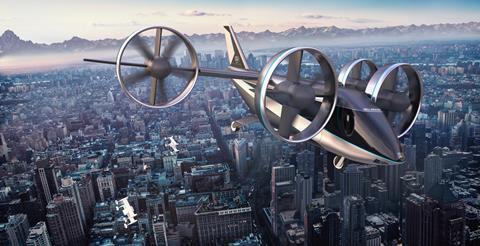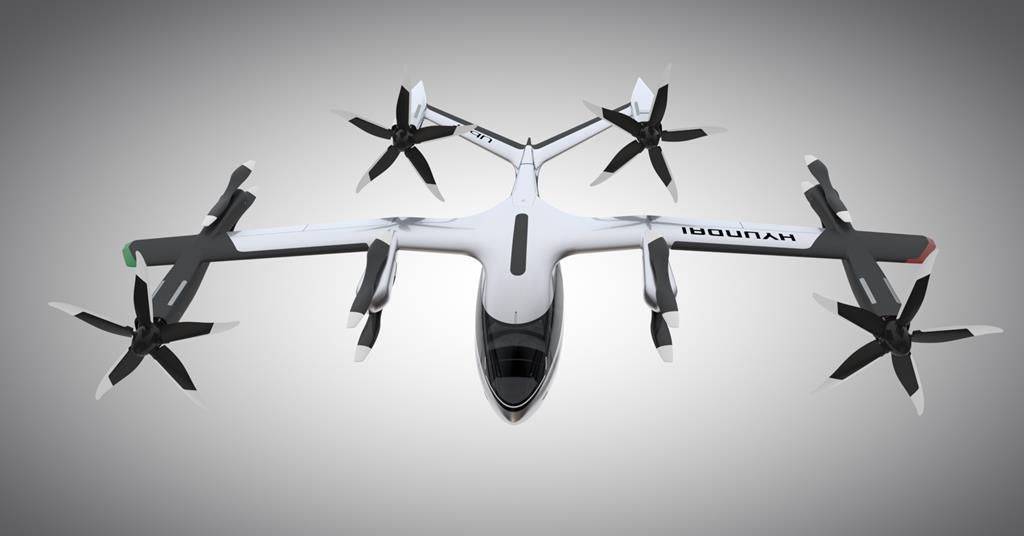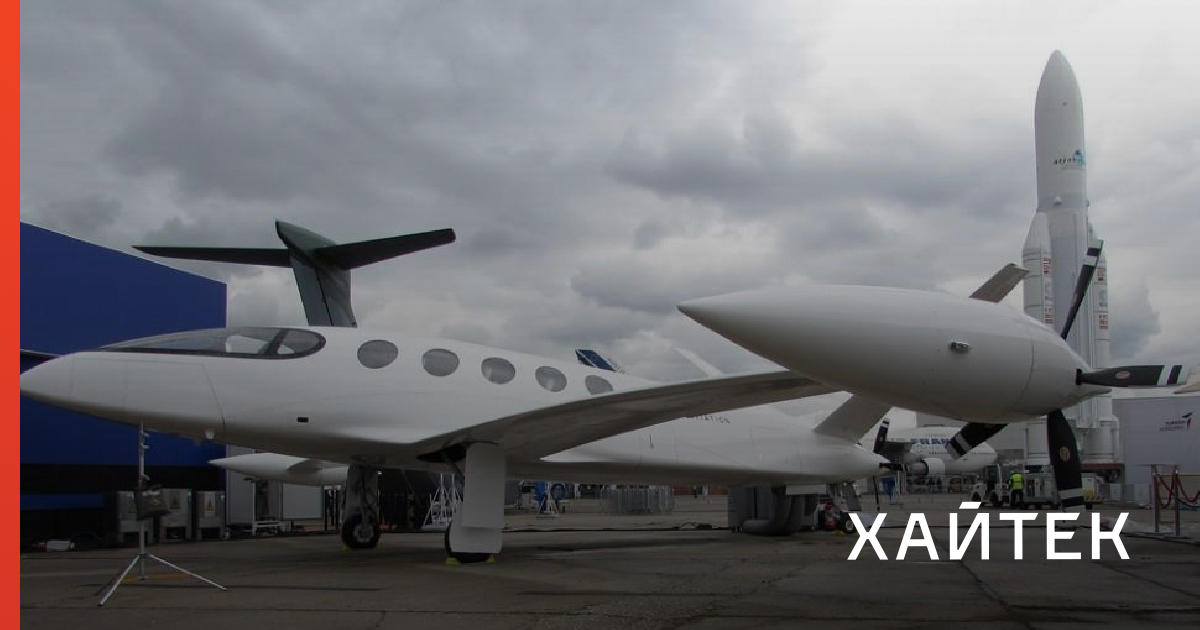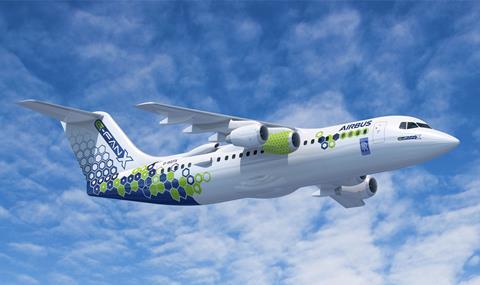Bell’s eVTOL vision changes as it eliminates two rotors and goes all electric
Bell’s eVTOL vision changes as it eliminates two rotors and goes all electric
By
Garrett Reim, Amarillo, Texas6 January 2020
Bell changed the design of its proposed electric vertical take-off and landing (eVTOL) aircraft, removing two rotor ducts and adding a purely electric propulsion option, after hearing from potential customers that shorter inner city travel would likely come before longer-range trips between metropolitan areas.
The new demonstrator aircraft is called the Bell Nexus 4EX. The “E” stands for electric and the “X” stands for experimental.
SHOW FULLSCREEN
Source: Bell
Bell Nexus 4EX eVTOL concept rendering
The Nexus 4EX will have four rotor ducts instead of the six rotor ducts proposed for the original Nexus eVTOL, which was unveiled a year ago at the 2019 CES in Las Vegas. By removing two ducts Bell says it can build an aircraft that has less drag and thus is more efficient in cruise mode .
Efficiency is critically important as battery energy density remains one of the chief limiting factors for electric aircraft, says Scott Drennan, vice-president of innovation with Bell.
Bell expects that its 4EX would be capable of flying up to 52nm (97km) while carrying four to five passengers, plus a pilot.
“The battery energy power densities right now are right on the edge for a mission like this,” says Drennan. He believes battery energy density could improve 10% to 15% by the mid-2020s, when Bell hopes for the eVTOL industry to take off.
For longer flights, Bell is working on a hybrid-electric variant of the 4EX, which will use a turbo-generator to charge batteries, which will power electric motors. That aircraft would have a range of 130nm. The hybrid-electric aircraft would be developed after the all-electric aircraft.
With its change to all-electric power, Bell dropped its former propulsion supplier Safran. A replacement electric motor supplier is to be named in early 2020. Bell says it is still considering Safran for hybrid propulsion.
The company says the Nexus 4EX demonstrator will likely closely resemble the eVTOL aircraft it eventually puts forward for commercial certification; a regulatory hurdle it expects to clear in the latter half of the 2020s.
“You’re not going to see it have an electrical system, or a duct, or a rotor system that is markedly different than what you’ll see down the road in the certification plan,” says Drennan.
Focused flight envelope
Whereas traditional helicopters are designed as utility vehicles, with broad abilities that vary from emergency medical service, police, or passenger transportation work, Bell envisions its eVTOL aircraft having a much narrower performance envelope, purely focused on moving passengers as efficiently as possible from point A to point B.
The Nexus 4EX is to have a max gross takeoff weight of about 3,200kg (7,000lb). It would have a cruise speed of 130kt (241km/h).
Source: Bell
Bell Nexus 4EX eVTOL concept rendering
Based on conversations and surveys of potential customers and stakeholders, such as ride-share companies, as well as city, state and national governments, the company estimates flights on average would be 13nm to 22nm in length.
Each aircraft is likely to operate 2,000h per year, the company says.
Bell believes hundreds to thousands of eVTOLs would be needed within a city to significantly change traffic patterns on the roads. The company declines to say how many aircraft would be required to reach profitability, noting its analysis is ongoing.
The manufacturer anticipates that eVTOLs would be primarily used for faster ride-share, public transportation and cost-sensitive traditional helicopter applications.
At least in the beginning, Bell doesn’t anticipate eVTOLs creating new travel demand – trips people would not take if they didn’t have access to the speed and range of the aircraft. Rather, early users will likely fly out of curiosity or experience seeking. Gradually, the company expects the aircraft to become routine part of business and personal travel, says Drennan.
Bell says it is forecasting demand using traffic, mobility and cellphone databases, examining how different factors such as passenger load, weather, digital infrastructure, and eVTOL airport loading patterns, might affect usage.
Predicting aircraft usage will be key to managing the battery charge levels and lifecycles of a fleet of eVTOLs, says Drennan.
“State of charge at any given moment in the life – and really the operating day – effects the next flight available because of time of recharge required and the life of the battery,” he says. “Therefore, it is imperative to smartly manage fleet operations and battery system operations by mixing flight distances to optimise operational cadence and battery life for our customers.”
The Bell Nexus 4EX’s batteries are to be supplied by Electric Power Systems. Algorithms within that company’s battery management system will be used to monitor battery temperature, current, voltage, discharge and charge rates.
The stringent performance requirements of eVTOL aircraft means degraded batteries could likely be resold and recycled into other industries, such as the automobile, boat or smart power grid sectors, which have less demanding power needs, says Drennan.
Automated flight controls
Bell is aiming to build an eVTOL that has fully autonomous flight controls. However, to initially gain public trust and US Federal Aviation Administration (FAA) certification the aircraft will have a pilot or “mission manager” onboard as backup.
Indeed, because eVTOL aircraft are so novel Bell is taking the liberty to rethink many aspects of the aircraft’s flight controls, including removing the helicopter’s traditional collective, cyclic and foot pedals.
“When you’re talking about fly-by-wire it just doesn’t make sense anymore to make people move their feet, move their hands and wiggle their ears all in unison to make this thing fly,” says Drennan. “A fly-by-wire aircraft can have control laws that can take into account intention [and] mission. And, if we integrate that in the right way we will take a great step right through the piloted piece to the autonomous.”
In its Future Flight Controls simulator Bell says it has studied how more than 6,000 participants, including professional helicopter pilots, but also a wide variety of amateurs, interact with different arrangements of digital flight controls.
For cost and safety reasons Bell is aiming to ultimately make its eVTOLs fully autonomous. In light of two recent Boeing 737 Max crashes caused by that airliner’s automated flight controls – the Maneuvering Characteristics Augmentation System – Bell is quick to explain its belief that designing an automated eVTOL from scratch is safer than adding automation to an aircraft not initially designed to be automated.
“By starting with the understanding that it’s going to be fully autonomous from the beginning you have a different mental starting point than when you iterate to something over time,” says Michael Thacker, Bell’s executive vice-president for technology and innovation.
The FAA has not formalised regulations for certificating eVTOL aircraft or rules for inner city autonomous flights. To help flush out operating procedures and flight rules, Bell was contracted last year by NASA to conduct flights using its Autonomous Pod Transport 70 cargo drone. The company is to conduct demonstrations in the Dallas-Fort Worth, Texas airspace in the summer of 2020.
The company also says it is ready to volunteer information to the FAA such as a detailed architecture of the Nexus 4EX’s propulsion and flight control systems, as well as its related safety analysis.
In addition to public and regulatory confidence in safety, Bell believes reducing the amount of noise produced by its eVTOLs will be crucial in getting people to accept hundreds or thousands of aircraft buzzing overhead. The company thinks that a decibel level in the high 70s or low 80s, about 15 decibels quieter than a traditional helicopter, should be its noise goal for the Nexus 4EX.
“Bell will strive for the lowest holistic noise considering not only loudness (decibels), but also tone, ambient noise and community noise tolerance,” says Drennan, noting that people in some cities may accept less sound than those in other regions. “Noise is too critically linked to performance and cost to set an arbitrary loudness level that doesn’t take all of these factors into account.”














